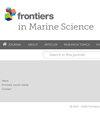Coastal dune erosion under the influence of the Marie and Nadine storms in January 2022 on the Southern Baltic Sea coast
IF 3
2区 生物学
Q1 MARINE & FRESHWATER BIOLOGY
引用次数: 0
Abstract
This paper examines the conditions leading to development and the course of the double storm surge event associated with cyclones Marie and Nadine in January 2022. The study also analyses the resulting changes of the dune coast following both surges. The findings are based on field measurements of morphological changes in beaches and dunes across various sections of the Polish coastline. The extent of coastal dune erosion was assessed with respect to storm surge parameters, including sea level height and wave run-up. Additionally, the relationship between beach height, wave run-up, and dune erosion volume was investigated. The maximum recorded sea level reached + 1.28 m, with wave run-up heights ranging between 3.0 and 3.3 m. Average erosion, measured as the retreat of the dune toe, was 4.3 m, though significantly higher retreat (4 to 8 m) was observed in areas where beach elevation was lower than the wave run-up. The most severe erosion, up to 8 m, occurred in cape-like sections where the coastline changes direction. Key factors influencing dune erosion volume included sea level and wave run-up heights, beach elevation, and the coast’s exposure to wind and wave action.2022年1月南波罗的海沿岸玛丽和纳丁风暴影响下的海岸沙丘侵蚀
本文研究了导致2022年1月与飓风“玛丽”和“纳丁”相关的双风暴潮事件发展的条件和过程。研究还分析了两次涨潮后沙丘海岸的变化。这些发现是基于对波兰海岸线不同区域的海滩和沙丘形态变化的实地测量得出的。根据风暴潮参数,包括海平面高度和浪高,评估了海岸沙丘侵蚀的程度。此外,还研究了滩高、浪高与沙丘侵蚀量的关系。有记录的最高海平面达到+ 1.28米,浪高在3.0至3.3米之间。平均侵蚀,以沙丘脚趾的后退来衡量,为4.3米,尽管在海滩高程低于波浪上升的地区观察到明显更高的后退(4至8米)。最严重的侵蚀,高达8米,发生在海岸线改变方向的海角状部分。影响沙丘侵蚀量的关键因素包括海平面和波浪上升高度、海滩高程和海岸对风浪作用的暴露程度。
本文章由计算机程序翻译,如有差异,请以英文原文为准。
求助全文
约1分钟内获得全文
求助全文
来源期刊

Frontiers in Marine Science
Agricultural and Biological Sciences-Aquatic Science
CiteScore
5.10
自引率
16.20%
发文量
2443
审稿时长
14 weeks
期刊介绍:
Frontiers in Marine Science publishes rigorously peer-reviewed research that advances our understanding of all aspects of the environment, biology, ecosystem functioning and human interactions with the oceans. Field Chief Editor Carlos M. Duarte at King Abdullah University of Science and Technology Thuwal is supported by an outstanding Editorial Board of international researchers. This multidisciplinary open-access journal is at the forefront of disseminating and communicating scientific knowledge and impactful discoveries to researchers, academics, policy makers and the public worldwide.
With the human population predicted to reach 9 billion people by 2050, it is clear that traditional land resources will not suffice to meet the demand for food or energy, required to support high-quality livelihoods. As a result, the oceans are emerging as a source of untapped assets, with new innovative industries, such as aquaculture, marine biotechnology, marine energy and deep-sea mining growing rapidly under a new era characterized by rapid growth of a blue, ocean-based economy. The sustainability of the blue economy is closely dependent on our knowledge about how to mitigate the impacts of the multiple pressures on the ocean ecosystem associated with the increased scale and diversification of industry operations in the ocean and global human pressures on the environment. Therefore, Frontiers in Marine Science particularly welcomes the communication of research outcomes addressing ocean-based solutions for the emerging challenges, including improved forecasting and observational capacities, understanding biodiversity and ecosystem problems, locally and globally, effective management strategies to maintain ocean health, and an improved capacity to sustainably derive resources from the oceans.
 求助内容:
求助内容: 应助结果提醒方式:
应助结果提醒方式:


